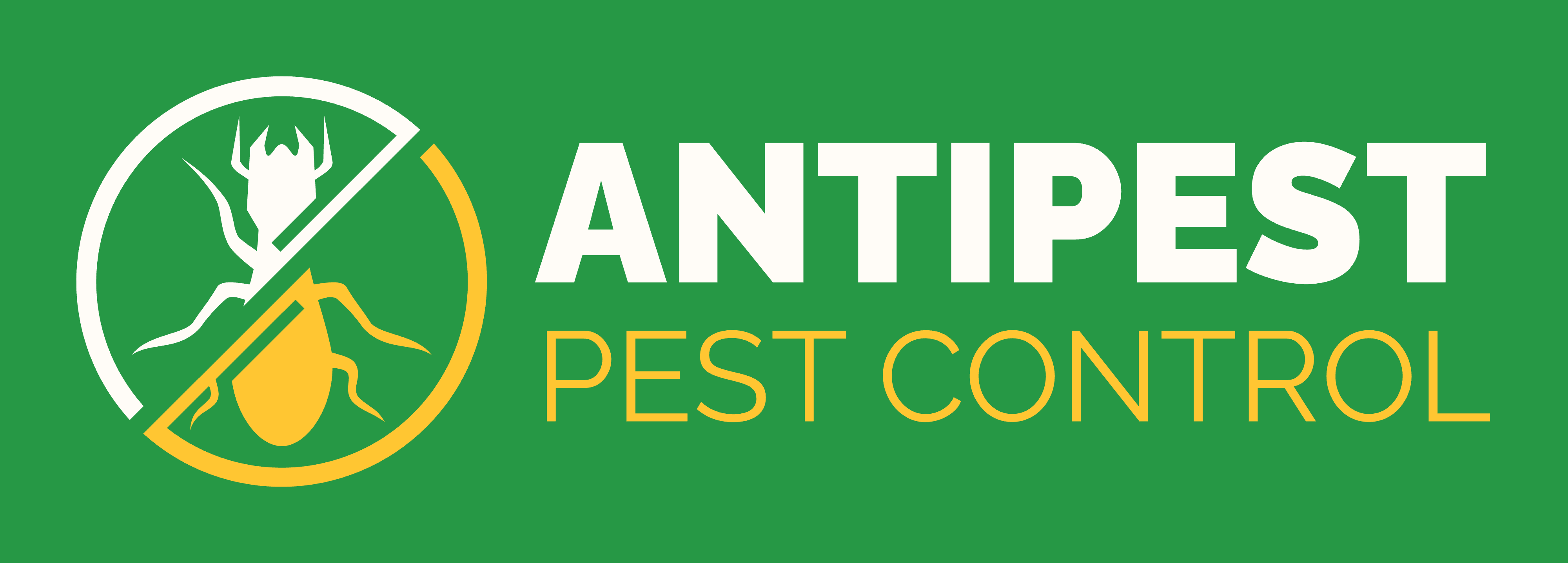Mealybugs are notorious sap-sucking pests that plague gardeners and plant lovers alike. If you’ve spotted fuzzy white bugs on your favorite hibiscus, watched your houseplants wither, or found sticky residue and black mold on leaves, you’re likely facing a mealybug infestation. Left unchecked, these pests damage plants, encourage sooty mold, and attract ants, causing extensive harm in gardens, greenhouses, and homes.
Many people frustrated by these stubborn invaders wonder: Can I learn how to get rid of mealybugs naturally or organically? What works for hibiscus, how do you tackle root mealybugs, and can strategies control aphids and mealybugs at once? This detailed guide covers all you need to know about effective, sustainable mealybug control.
Table of Contents
What Are Mealybugs and Why Are They Harmful?
Mealybugs are small, soft-bodied insects, typically covered in a powdery wax. They feed by piercing plant tissues and sucking out sap, which weakens plants, stunts growth, and causes deformed leaves and fruit. Their honeydew attracts ants and promotes black sooty mold, compounding plant stress.
Common mealybug species include the citrus, long tailed, and hibiscus mealybug, each with its favorite host plants. Mealybugs can infest garden ornamentals, vegetables, fruit trees, and especially indoor plants. Root mealybugs attack below the surface, damaging plant roots and impeding water and nutrient absorption.
10 Powerful Ways to Get Rid of Mealybugs
From prevention to intervention, there are several proven techniques for controlling and eliminating these pests, many of which are natural and organic for safer gardening.
1. Blast Mealybugs Off with Water
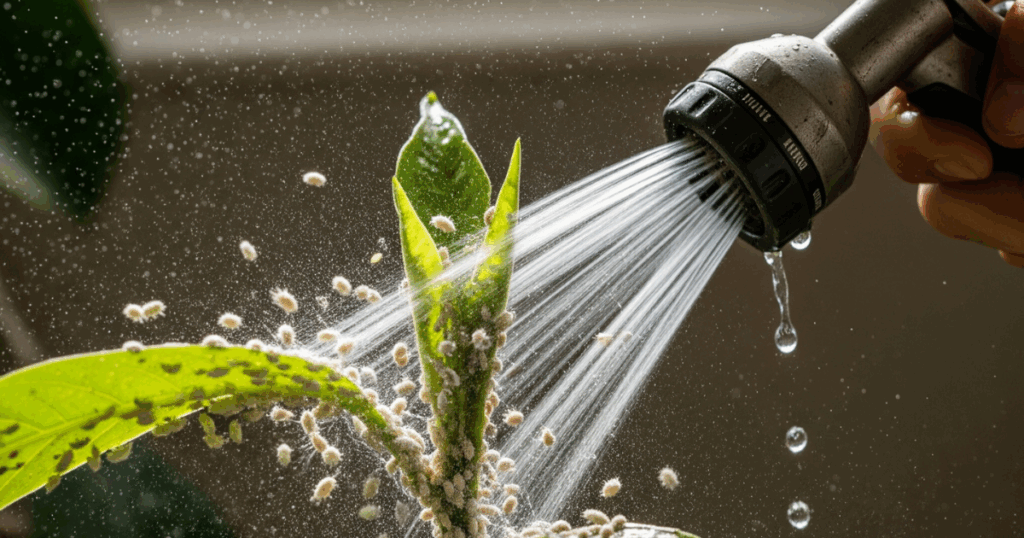
One of the simplest, most eco-friendly methods to control mealybugs is using a forceful stream of water to dislodge them from infested plants. This method is especially effective during the early stages of an infestation and works best on houseplants or outdoor container plants where you can manoeuvre the foliage easily.
How to Do It:
- Use a garden hose with a spray nozzle, or a spray bottle for indoor plants.
- Target the undersides of leaves, stems, and leaf joints, where mealybugs tend to hide and cluster.
- Tilt or rotate the plant to get better access to hidden parts.
- Repeat the process every 3–5 days for a couple of weeks to interrupt the mealybugs’ life cycle.
Why This Works:
Mealybugs are soft-bodied, slow-moving insects that cling to plant tissue using waxy secretions. A strong stream of water strips them away without needing chemicals, making this method safe for pets, children, and pollinators.
Ideal For:
- Minor to moderate infestations
- Herbs, ornamentals, succulents, and houseplants like pothos and peperomia
- Organic gardeners and chemical-free gardening routines
2. Remove by Hand or with Rubbing Alcohol
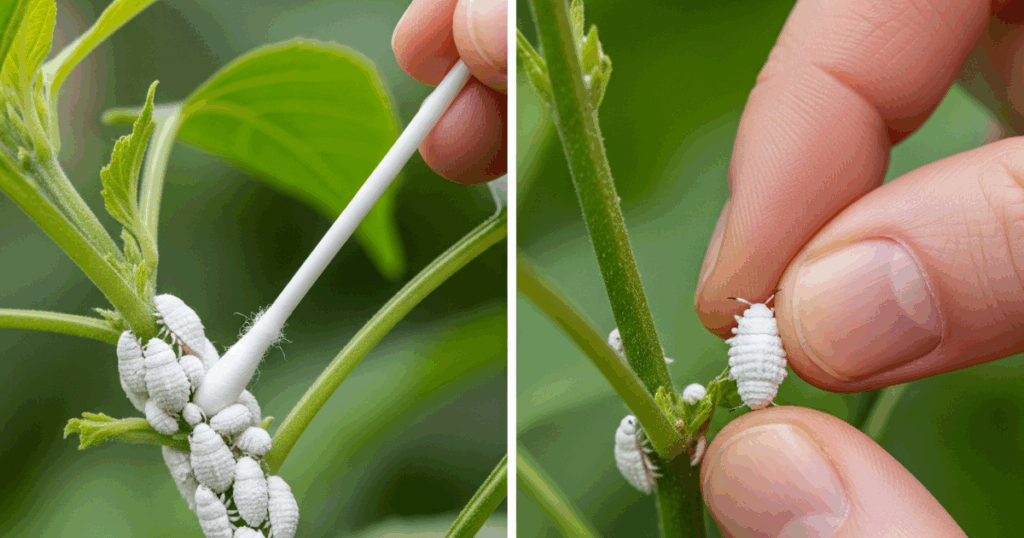
When dealing with small or localized mealybug infestations, manual removal using rubbing alcohol is one of the most effective and targeted treatments. This approach allows you to treat problem areas directly without affecting beneficial insects or releasing chemicals into the air, making it ideal for indoor plants, balcony gardens, and organic gardening setups.
How to Apply:
- Dip a cotton swab or Q-tip into 70% isopropyl alcohol (rubbing alcohol, commonly available at pharmacies).
- Carefully dab each visible mealybug. The alcohol instantly dissolves their waxy, cotton-like coating, causing the bug to dehydrate and die within seconds.
- For broader coverage on leaves and stems, use a soft cloth or cotton pad soaked in rubbing alcohol and gently wipe down plant surfaces.
- Don’t forget to check under the leaves, inside leaf nodes, and close to the soil, common hiding spots for mealybug colonies.
Why This Works:
- Isopropyl alcohol breaks down the protective white wax mealybugs use to shield themselves from moisture loss and predators.
- This method kills bugs on contact without harming the plant (when used properly).
- It’s safe for humans, pets, and the environment when used in moderation.
Best For:
- Houseplants like ferns, peace lilies, succulents, fiddle-leaf figs, and orchids
- Small infestations or isolated clusters
- Delicate plants that may not tolerate chemical sprays well
Caution Tips:
- Always test rubbing alcohol on a small patch of the plant first to ensure there’s no sensitivity or leaf burn.
- Avoid spraying alcohol directly onto plants in hot sunlight as it may cause leaf scorch.
- For quick action, mix a small spray bottle with 1 part alcohol to 3 parts water and mist lightly over infested areas. Avoid over-soaking.
Repeat if Needed:
Repeat spot cleaning every few days over 2–3 weeks to ensure you target any newly hatched mealybugs and completely break the cycle.
3. Pruning
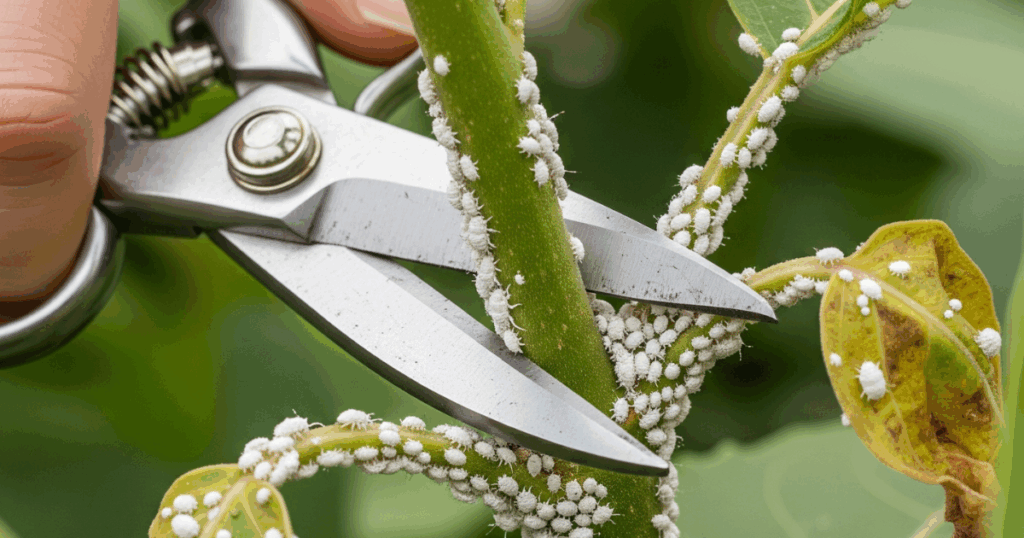
When a mealybug infestation becomes too widespread for spot treatment, the most effective first step is careful pruning and disposal of the most affected plant parts. This method not only removes the bulk of the pests quickly, but also prevents them from spreading to healthy areas or neighbouring plants.
How to Do It:
- Identify parts of the plant with clusters of mealybugs, typically on the undersides of leaves, leaf nodes, growing tips, or soft stems.
- Using a clean, sharp pair of pruning shears or scissors, cut away leaves, stems, or even entire branches if severely infested.
- Seal trimmed plant parts in a plastic bag and dispose of them in a closed bin. Avoid composting, as mealybugs may survive and reinfest your garden.
- After pruning, carefully inspect the rest of the plant and treat remaining bugs with rubbing alcohol or neem oil spray.
Why Pruning Helps:
- Physically removes a large number of pests at once
- Reduces pest pressure on the plant, allowing it to recover faster
- Prevents mealybugs from migrating to uninfected parts of the plant or nearby plants
Best Practices:
| Step | Tip |
|---|---|
| Identify Infestation Zones | Look for white, cottony masses or sticky residue |
| Disinfect Between Cuts | Use 70% isopropyl alcohol or bleach solution (1:10) |
| Prune During Dry Weather | Reduces risk of fungal infections |
| Follow with Targeted Spray | Neem oil or insecticidal soap post-pruning |
Always disinfect your tools after each cut to prevent unintentionally transferring mealybugs, eggs, or fungal pathogens to other parts of the same or different plants.
Ideal For:
- Outdoor garden plants, shrubs, and indoor foliage with heavy mealybug colonies
- Fruit trees, ornamentals, and succulents where physical removal is safer than excessive spraying
- Preventing systemic infestation in multi-stemmed plants
Follow-Up Care:
- Water and fertilize the plant lightly to encourage new, healthy growth
- Continue monitoring weekly for signs of re-infestation
- Apply organic pest deterrents like neem or horticultural oil to prevent resurgence
4. Insecticidal Soap Spray
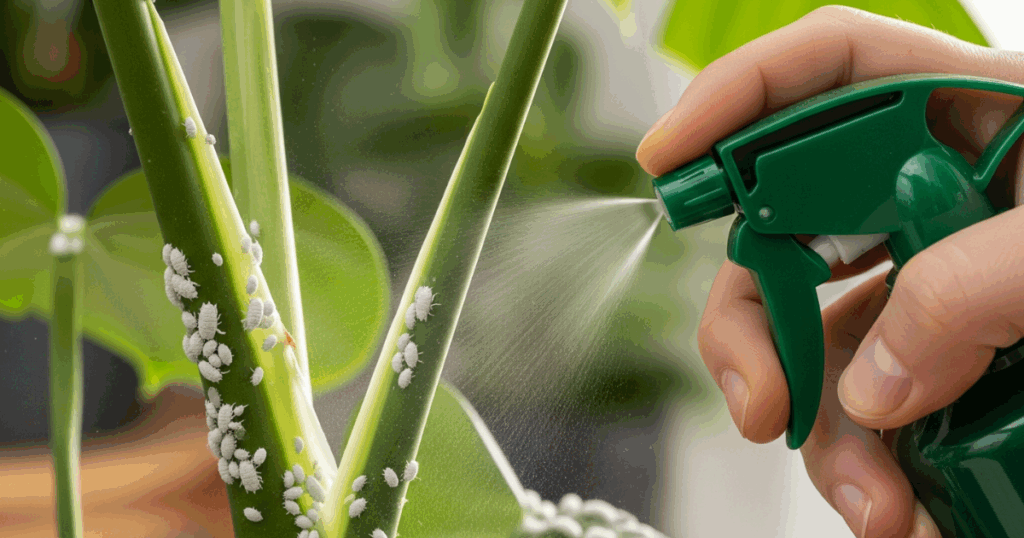
- Spray directly onto visible mealybugs, ensuring all plant surfaces are thoroughly covered, especially leaf undersides and hidden joints where pests cluster.
- Make sure to cover every area where mealybugs hide; thoroughness is key for maximum effectiveness.
- Reapply weekly or as needed until the population is under control, as insecticidal soaps do not have residual activity and miss any pests not directly hit by spray.
- Test on a small area of your plant first. Some sensitive species may show leaf burn or discoloration; always check after 24 hours before broad application.
Application Tips
| Step | Guidance |
|---|---|
| Spray Timing | Early morning or evening to avoid leaf burn |
| Concentration | Always follow product label or dilute as directed |
| Coverage | Repeat on new growth, leaf undersides, stems, crevices |
| Aftercare | Monitor for additional pests; repeat as required |
Discover safe and effective ways on How to Get rid of sand wasps from your yard – read the full guide here.
5. Neem Oil and Horticultural Oils
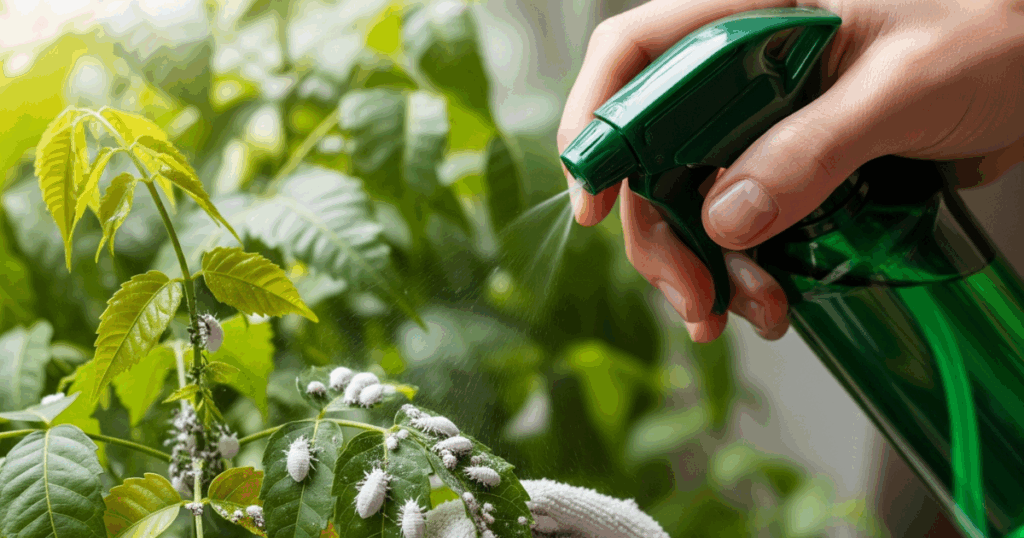
Neem oil is a proven natural pesticide that disrupts mealybug feeding and reproduction. To use:
- Mix neem oil as directed with water and a few drops of mild dish soap.
- Spray all plant surfaces, paying attention to where mealybugs hide, including nodes and leaf undersides.
- Repeat every 7–14 days.
Neem oil is especially useful when considering how to get rid of mealybugs naturally or on specific plants like hibiscus.
Horticultural oils work similarly, suffocating insects. Ensure good coverage and apply in cooler times of day to avoid leaf burn.
6. Organic Homemade Sprays
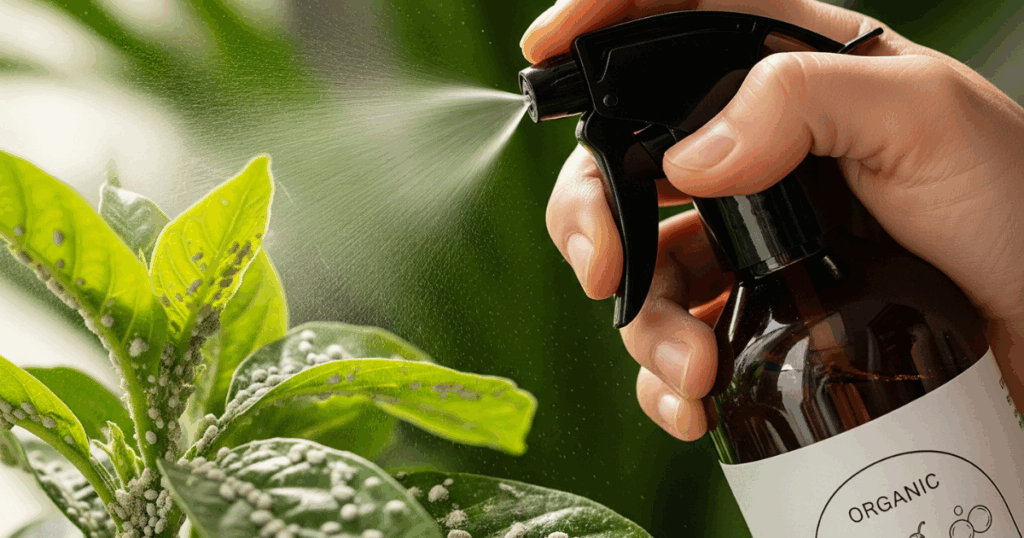
Homemade remedies are cost-effective, safe, and often very effective:
- Garlic or onion sprays: Blend a bulb of garlic or a small onion with water, strain, and mix with a few drops of dish soap. Spray thoroughly on affected plants.
- Chili or cayenne pepper sprays: Combine with water, strain, and spray as deterrents for both mealybugs and aphids.
These solutions help with both how to get rid of aphids and mealybugs by disrupting feeding and reproduction.
7. Encourage Natural Predators
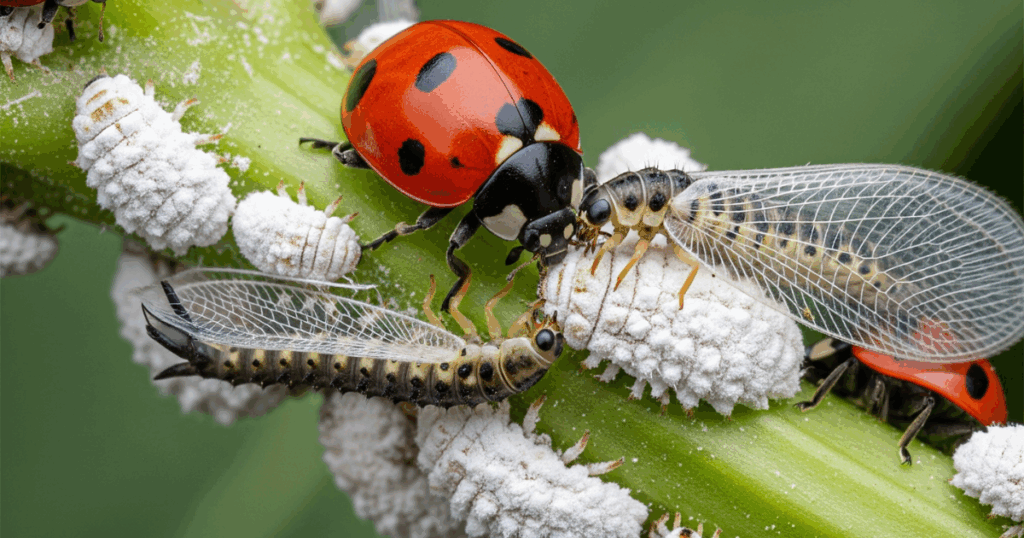
Beneficial insects are nature’s pest control:
- Ladybugs (especially the Mealybug Destroyer, Cryptolaemus montrouzieri), lacewings, and parasitic wasps voraciously eat mealybugs.
- Attract predators by planting nectar-rich flowers: yarrow, sweet alyssum, or bee balm.
Avoid broad-spectrum insecticides, which harm these allies. Keep ants away, as they protect mealybugs from predators.
8. Diatomaceous Earth and Sticky Traps
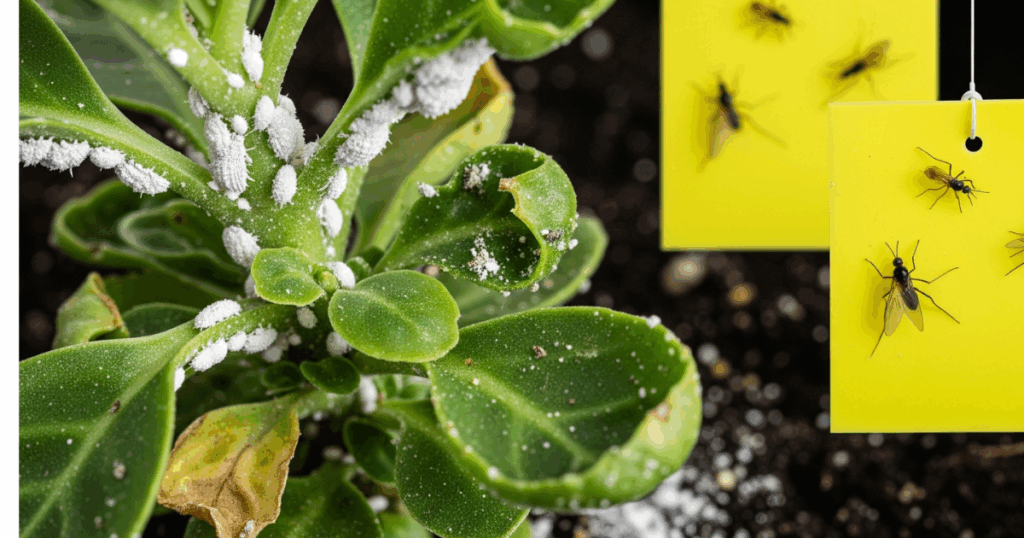
When it comes to organic gardening and insect control, diatomaceous earth (DE) and sticky traps are reliable tools that can complement your mealybug management strategy, especially for indoor plants and greenhouses.
Diatomaceous Earth: A Natural, Non-Toxic Insect Killer
Food-grade diatomaceous earth is a fine, white powder made from fossilized algae. Though harmless to humans and pets, its microscopic, abrasive particles penetrate the soft exoskeletons of mealybugs and dehydrate them from the inside out, leading to death.
How to Use Diatomaceous Earth:
- Choose food-grade DE only, not pool-grade, which is chemically treated and unsafe for plants.
- Lightly dust the powder on soil surface, plant stems, and any visible mealybug clusters using a duster or soft brush.
- Focus on areas like leaf joints, base of the stems, and pot rims, where mealybugs often hide or lay eggs.
- Reapply after watering or rain, as moisture renders DE ineffective.
Benefits of Diatomaceous Earth:
| Advantage | Description |
|---|---|
| Organic & Pet-Safe | No chemicals; safe for use around kids, cats, and dogs |
| Long-lasting in Dry Areas | Remains effective as long as it stays dry |
| Multi-pest Repellent | Works on ants, spider mites, fungus gnats, and soft-bodied pests |
“Wondering how to get rid of centipedes in bathroom? Find quick and effective solutions — read the guide here.”
9. Isolate and Monitor Plants
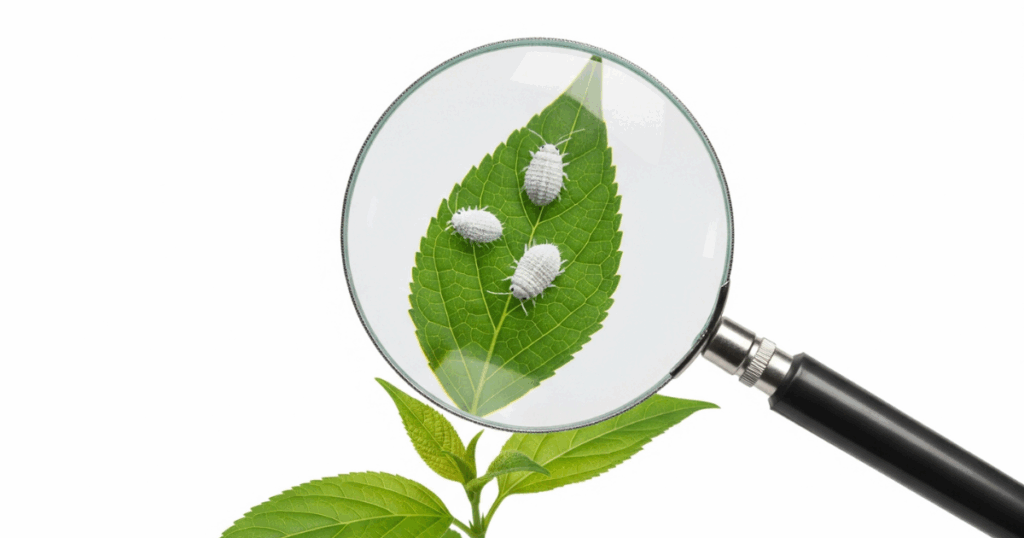
A key component of any effective mealybug management plan is prevention, and that starts with isolation and vigilant monitoring. Whether you’re adding a new plant to your collection or dealing with an active infestation, quarantining plants is essential to stop mealybugs before they spread to healthy greenery.
Why Isolation Matters?
Mealybugs travel slowly, but they can easily spread via contact, wind, shared tools, or potting soil. Once they reach other plants, they reproduce quickly and turn minor problems into major outbreaks. Isolating infected (or new) plants gives you a chance to treat issues early, without risking your healthy plants.
How to Isolate Effectively:
- Immediately separate infested plants from your main collection by placing them in a different room, balcony corner, or greenhouse section.
- For new plants, quarantine them for at least 2 weeks before integrating them with the rest.
- During isolation, treat affected plants with insecticidal soap, neem oil, or manual cleaning as needed.
Avoid sharing watering cans, pruning shears, or plant-support clips between isolated and healthy plants unless they have been sanitized.
Monitor Regularly, Especially in Warm Seasons
Mealybugs thrive in warm, humid environments, exactly the conditions common in tropical regions and during monsoon or summer months. Catching signs early is key.
What to Look For During Inspection:
| Area to Inspect | What to Look For |
|---|---|
| Undersides of Leaves | White cottony clusters, sticky residue |
| Leaf Joints & Stems | Small cottony clumps, yellowing or wilting leaves |
| Base of the Plant | Crawling bugs, waxy pellets resembling fluff |
| Soil Surface & Roots | For root mealybugs (especially in succulents) |
10. Address Root Mealybugs
Root mealybugs hide below the soil line, feeding on plant roots.
- Unpot and wash roots gently to remove visible bugs and egg sacs.
- Dip roots in a diluted neem oil or insecticidal soap solution (following label directions).
- Report in fresh, sterilized soil. Clean containers before replanting.
For persistent soil infestations, beneficial nematodes (Steinernema species) can be watered into the soil to hunt root mealybugs without chemicals.
Natural Vs Organic Mealybug Treatments
| Method | Target Area | Natural/Organic | Application Frequency |
| Strong water jet | Leaves/stems | Yes | As needed |
| Rubbing alcohol | Individual insects | Yes | Spot treat as needed |
| Pruning | Infested plant areas | Yes | Once per infestation |
| Insecticidal soap | Leaves/stems | Yes | Weekly until controlled |
| Neem oil/horticultural oil | Whole plant/root zone | Yes | Every 7–14 days |
| Homemade sprays (garlic, etc) | Leaves and stems | Yes | Every 7–10 days |
| Natural predators | Whole garden | Yes | Release/attract as needed |
| Diatomaceous earth | Plant surfaces/soil | Yes | After rain/watering |
| Traps | Around plants | Yes | Replace as needed |
| Isolation/quarantine | Entire plant | Yes | Until cleared |
How to Get Rid of Mealybugs on Specific Plants?
Successfully eliminating mealybugs from different plant types often requires tailored techniques. For delicate indoor plants and succulents such as jade plants, it’s best to isolate the plant first, then dab individual mealybugs with a cotton swab dipped in isopropyl (rubbing) alcohol always test on a single leaf before broader application, as some plants may be sensitive. For tougher houseplants and foliage plants, gently spraying the entire plant with a diluted isopropyl alcohol solution, insecticidal soap, or neem oil can be effective, making sure to cover all hidden crevices and leaf undersides. Always monitor plant health post-treatment, and consult specific care guides for especially sensitive species before using chemical or homemade remedies.
How to Get Rid of Mealybugs on Hibiscus?
Hibiscus is particularly susceptible. Use a combination of neem oil spraying and careful pruning of infested buds or branches. Regularly wipe leaves with a damp cloth, and encourage beneficial insects outside.
How to Get Rid of Mealybugs on Plants Indoors?
For houseplants, focus on rubbing alcohol applications, neem oil, and isolation. Monitor windowsills and pots, as they often harbor eggs and nymphs. Clean plant pots and change soil if infestations are severe.
How to Get Rid of Root Mealybugs?
Root mealybugs can ruin potted plants. Roots should be washed thoroughly, and fresh soil and pots used. Beneficial nematodes are an excellent organic soil treatment.
How to Get Rid of Mealybugs Organically and Naturally?
Organic and natural mealybug control means avoiding synthetic chemicals, using products and techniques that won’t harm pollinators, pets, or the environment.
Key organic options include:
- Neem oil and horticultural oils
- Insecticidal soaps
- Beneficial insects (ladybugs, lacewings)
- Homemade sprays using garlic, onion, or chili
Combine several techniques for best results, always starting with the least invasive methods.
Prevention: Keeping Mealybugs Away for Good
Consistent prevention is just as critical as treatment.
- Inspect new plants for signs of pests before bringing them home.
- Keep plants healthy and stress-free, as vigorous plants are less susceptible.
- Prune crowded growth to improve airflow and sunlight penetration.
- Remove plant debris consistently.
- Manage ants that might protect or farm mealybugs for honeydew.
Conclusion
Learning how to get rid of mealybugs relies on vigilance, timely intervention, and a preference for natural and organic solutions. For reliable pest control services in Mumbai, trust Antipest – your expert partner in eliminating termites, cockroaches, rodents, bed bugs, and more.
Visit us at Antipest Office, Room No.45, Jamuna Mishra Chawl, Old Nagardas Rd, Saraswati Baug, Mogra Pada, Natwar Nagar, Andheri East, Mumbai, Maharashtra 400069. Our trained technicians use safe and effective methods to protect your home and business. For service bookings and consultations, call us at +91 9819018398 .
How to Get Rid of Mealybugs? – FAQ
What are mealybugs?
Mealybugs are small, soft-bodied insects covered in a white, waxy coating. They feed on plant sap and are common pests on houseplants and garden plants.
How do I get rid of mealybugs quickly?
Remove mealybugs by wiping them off with a cotton swab dipped in rubbing alcohol, or spray plants with soapy water or neem oil to kill and repel them.
What causes mealybugs?
Mealybugs often appear due to warm, humid conditions, overcrowded plants, over-fertilization, or bringing in new, infested plants.
How do mealybugs spread?
Mealybugs spread by crawling between plants, being transferred on garden tools, through new plants, or by ants attracted to their honeydew.
Are mealybugs harmful to plants?
Yes, mealybugs suck sap from plants, causing yellow leaves, stunted growth, and sometimes plant death. Their honeydew also attracts ants and leads to mold growth.
Do mealybugs harm humans?
No, mealybugs do not bite or harm humans but can sometimes cause mild skin irritation for sensitive individuals.
How do I prevent mealybugs?
Inspect new plants before bringing them home, avoid overwatering, keep plants healthy, and isolate infested plants to prevent spread.
Can plants recover from a mealybug infestation?
Yes, most plants can recover if mealybugs are removed early and the plant is given proper care after treatment.
Will dish soap kill mealybugs?
Yes, a mixture of dish soap and water sprayed on the plant suffocates and kills mealybugs effectively.
Why is it important to remove mealybugs immediately?
Mealybugs reproduce quickly and can destroy plants if not controlled promptly, making early removal essential for plant health.

